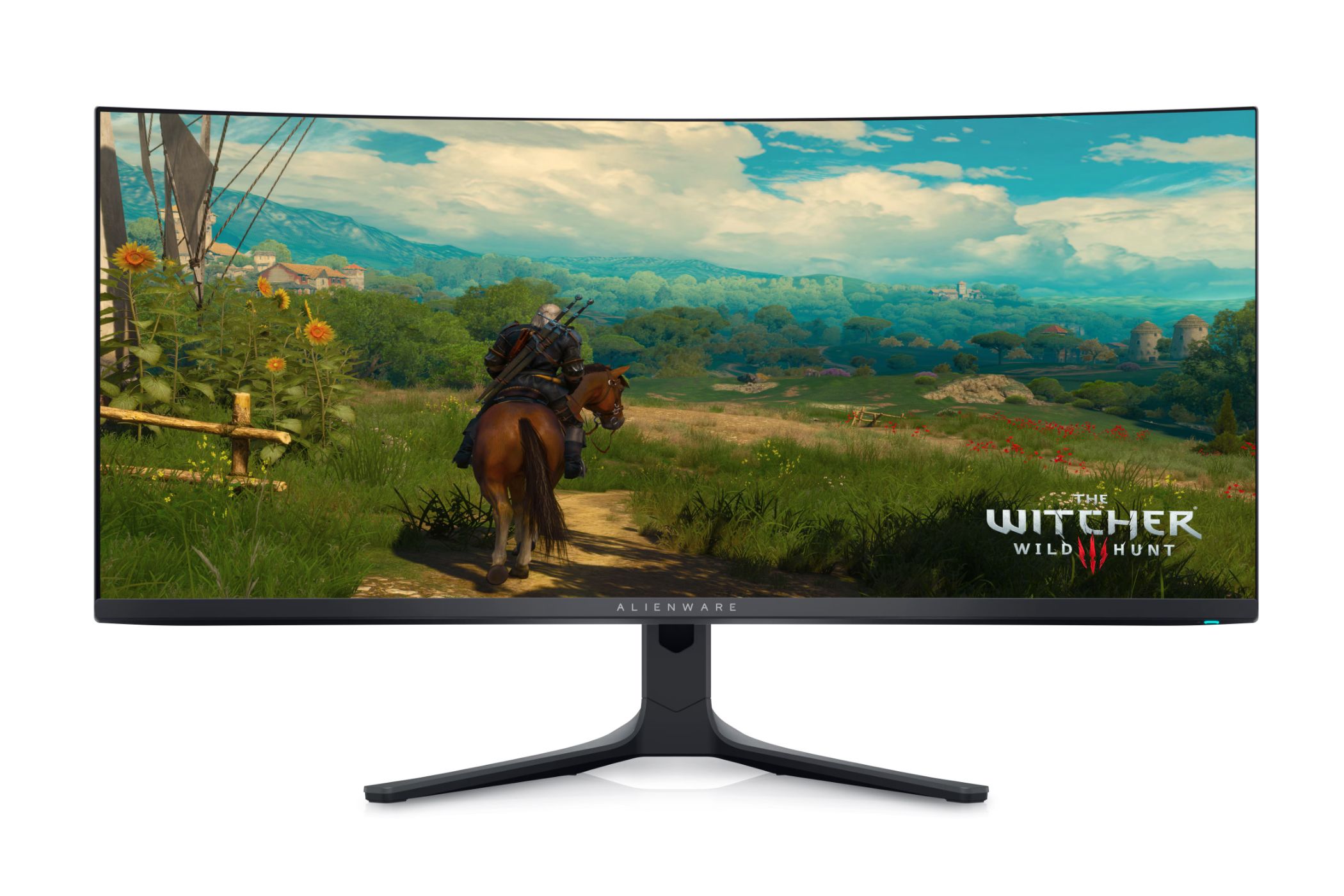
Enhanced Immersion in Gaming with the Transition to Curved Ultrawide Screen Technology

Enhanced Immersion in Gaming with the Transition to Curved Ultrawide Screen Technology
Key Takeaways
- Curved ultrawide monitors enhance immersion and provide a cinematic gaming experience.
- Games benefit from extended aspect ratios by improving environmental awareness and spreading out interfaces.
- Ultrawide gaming may require more GPU power and encounter occasional pillarboxing in cutscenes and games that don’t support the wider aspect ratio.
Ever since my first taste of OLED technology, I’ve become very picky about my screens. While I thought I’d reached the apex of what I wanted for a gaming display, my recent purchase of a curved ultrawide monitor—two features I previously wrote off as gimmicks—has altered how I experience games forever.
Why I Went With a Curved Ultrawide
I recently re-entered the PC gaming sphere after the better part of a decade. My work increasingly demanded access to one, but the rig I built in 2011 was all but dead. So, when I saw a pre-built rig at a deep discount, I decided to take the plunge. Alongside this, I decided to upgrade to a gaming-ready monitor to complement my new PC’s capabilities.
There was a catch, however. My PC wouldn’t be pumping out 4K graphics nor would any screen live up to the high bar set by my beloved 65-inch LG CX OLED. Whatever monitor I bought would need a special something that made me excited to game at my desk, rather than on my couch. This is why I decided to try a curved ultrawide monitor, settling on Alienware’s AW3423DWF 34-inch model after a combination of research and ongoing sales.
To be clear, this purchase was a leap of faith. I’d only ever used an ultrawide monitor in an office setting, and certainly never a curved one. Suffice to say, I had my concerns with the formats. Would the pillarboxing (black bars on the edge of the screen) of video content and games that don’t support ultrawide’s 21:9 aspect ratio be a consistent bugbear? Would the screen’s curvature result in an unnatural, warped image? Most importantly, how would I even like this form factor compared to the 16:9 displays I’m used to?
Most of my fears were quickly assuaged. Yes, pillarboxing is an ever-present reality to preserve the cinematography of cutscenes, and the transition between them and ultrawide gameplay can be jarring. The extra screen real estate when actually playing games makes it easy to forgive, though. Meanwhile, the curved screen rarely impacted the visual presentation, instead deepening my immersion by spanning my entire peripheral vision.
This resulted in a level of immersion only rivaled by VR, and something my other displays could not do in the same capacity.
Bigger, Better Gaming
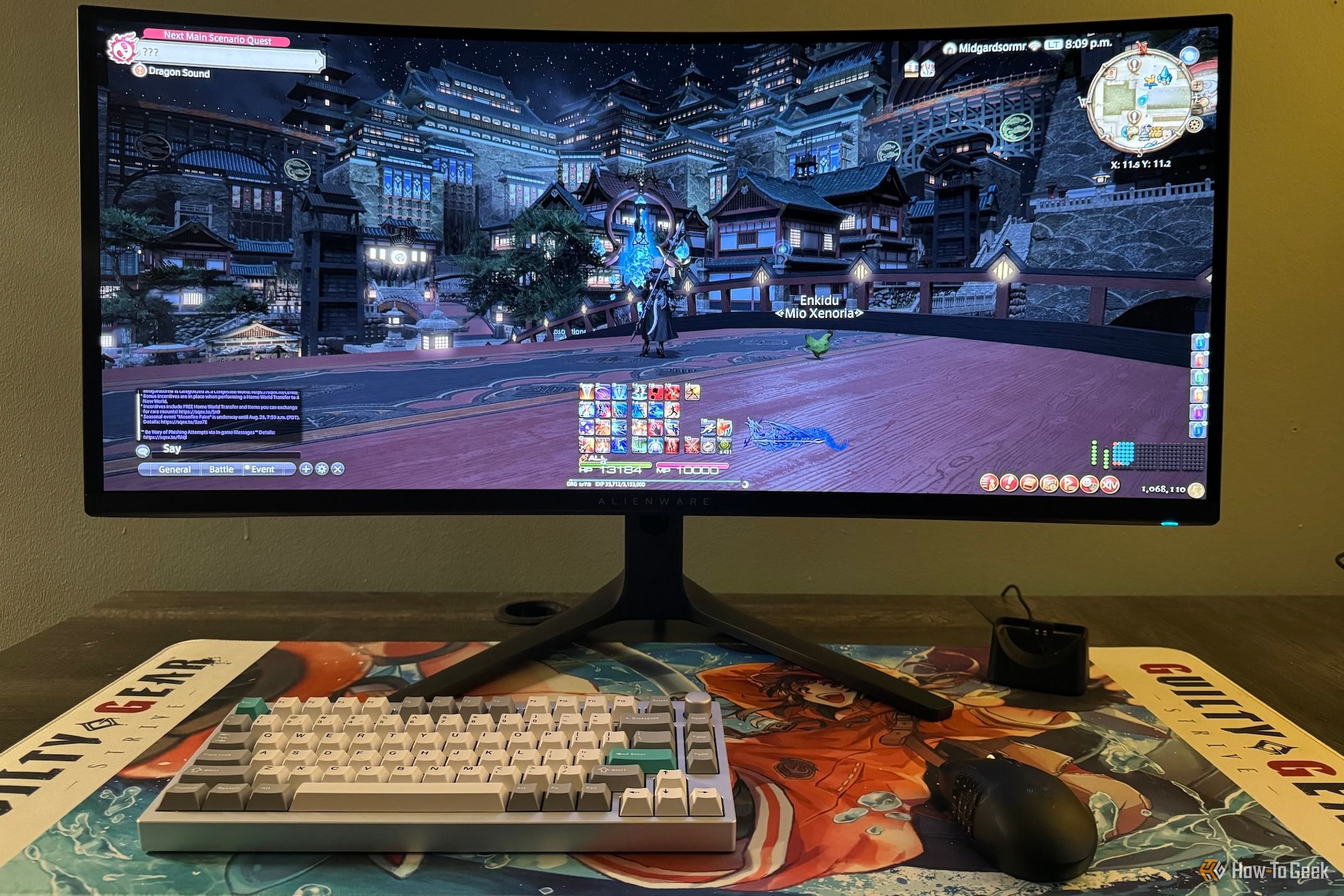
Tim Rattray / How-To Geek
Logic would dictate that I’d immediately test gaming’s biggest, baddest powerhouses on this upgraded setup, yet this corner of gaming isn’t one I usually indulge in. Instead, I opted to make comparisons with games I’m already familiar with. There was no better point of first contact than Final Fantasy VII Ever Crisis, a port of a mobile gacha game I play daily.
Given that Ever Crisis is designed for a pocket-sized touch screen, my expectations for the PC port were low. I was therefore pleasantly shocked to find it filled my entire display. The widescreen layout repositioned the menu interface so that the game’s collectible wallpapers could be displayed without obfuscation.
Battles felt grander with more real estate afforded to viewing party members and the landscape. Even small details like being able to see my entire party on victory screens made this a superior experience to the mobile original.
While that was a great first impression, my love for the monitor was truly transformative for the games I would play next. At the forefront of this was Final Fantasy XIV, the game I was most hoping would benefit from the extended aspect ratio. And it was.
The MMO’s environments felt bigger than ever, both due to the newfound space to spread out UI elements and more of the world being displayed onscreen at once. In fact, seeing more of the game at any given time improved my environmental awareness when playing multiplayer content, making this a superior gameplay experience on a mechanical level.
Next, I wanted to give an old-school classic a spin in a format it was never meant for. Chrono Trigger was an easy choice as it’s my favorite game. I braced for impact once again, expecting lots of visual mishaps that were originally covered up by the 4:3 aspect ratio. What I got was anything but; this was Chrono Trigger like I’d never experienced it before.
The experience is best summed up in this anecdote that left me awestruck: standing in the center of Leene Square during the Millennial Fair, I could view the entire betting race lap unfold. While not every moment offered this new perspective (there are plenty of moments when you’re greeted with a sea of trees to fill the extra space), this is the most refreshing the game has felt since the 2008 DS remaster, all thanks to the possibilities of ultrawide.
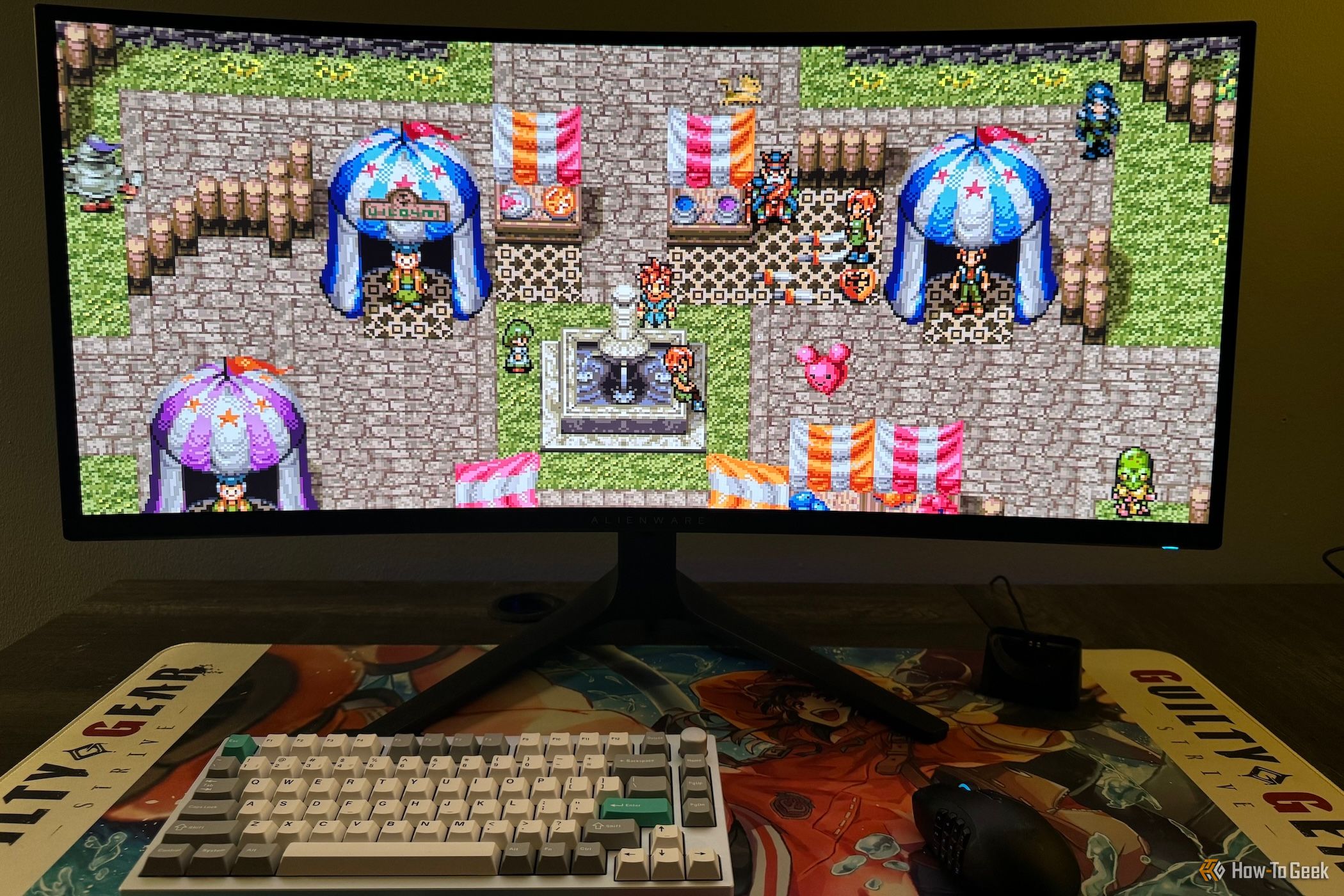
Tim Rattray / How-To Geek
With that successful retro conversion in the bag, I tested the recent Doom + Doom II repackage hoping for similar results. It made good on the ultrawide promise, presenting what is essentially an oversized field of view. This was a cool new perspective on a game I’d played numerous times and, like Final Fantasy XIV, provided the benefit of more situational awareness.
However, I’m unsure if this is the optimal way to play Doom as the amount of information on the screen at any given time was often more distracting than helpful, and playing a first-person shooter with such a wide field of view feels a tad awkward. Nonetheless, it was a memorable “woah” moment when E1M1 loaded up in widescreen glory.
Cyberpunk 2077 worked a bit better as a translation of a first-person game to widescreen, in part because of the fisheye effects on wide field-of-view settings that felt natural on a curved display. The curvature also helped sell the world of Night City more than ever as it felt like playing on a screen that would be commonplace amongst the locale’s futuristic technology.
Interactions with computer terminals felt particularly immersive given the form factor. Also, because the screen spanned more of my peripheral vision than a flat panel would, it felt like I was seeing through V’s cybernetic eyes (something the game’s interface is meant to simulate). This might be the strongest case for gaming on a curved monitor that I’ve encountered in my journey thus far.
There are plenty of other games I’ve been enjoying the benefits of ultrawide through, like a broader view of SteamWorld Heist II’s maps for better strategizing and a heightened emptiness to Control’s surreal office landscape. I also like Vampire Saviors’ solution of creating transparent pillarboxes, allowing you to see enemies you wouldn’t in 16:9 while maintaining wall-bounce mechanics built around that aspect ratio.
I continue to be surprised by how versatile a curved ultrawide monitor is and how well it’s supported by a wide swath of games.
It’s Not Perfect, Though
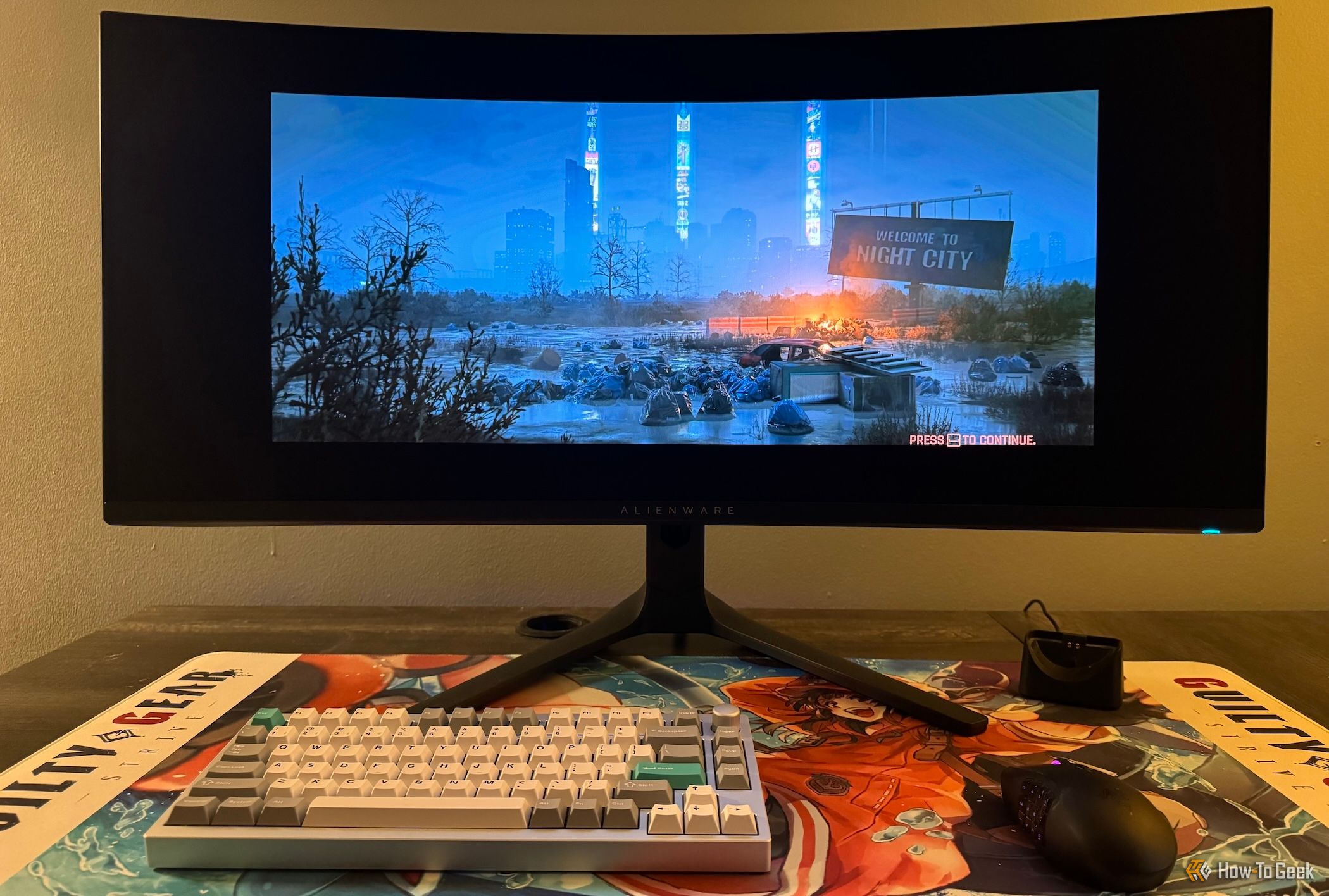
Tim Rattray / How-To Geek
While my overall experience has been positive, there are aspects of widescreen gaming that I’m less enthused about.
As I previously mentioned, I’ve yet to experience a game without pillarboxing. The occasional pillarboxed cutscene doesn’t bother me too much, but in a game like Final Fantasy XIV where they’re abundant, the constant swaps between aspect ratios is jarring. It’s something I understand the necessity for and have learned to live with, but regardless, there’s a constant feeling that the way I’m playing a game isn’t the developer-intended experience.
This is especially noteworthy for games that try to seamlessly blend their cutscenes and gameplay. Not every game supports ultrawide either, which results in permanent pillarboxes; this was consistently my experience with fighting games.
Something I didn’t consider when purchasing the monitor was the extra GPU power needed to render games at 21:9. It’s an easy caveat to overlook, though perhaps the most important factor when weighing an ultrawide monitor purchase. In the more intensive games I tested, there was a marked difference in frame rates when using the wider aspect ratio.
I’ve had to learn to adjust a few settings I want a smoother experience. I feel the increased screen real estate is worth the performance hit assuming your PC can already run games up to your expectations, but you might not if your PC is already struggling with games at a standard resolution and you don’t want to compromise on graphical fidelity.
I Can Never Go Back
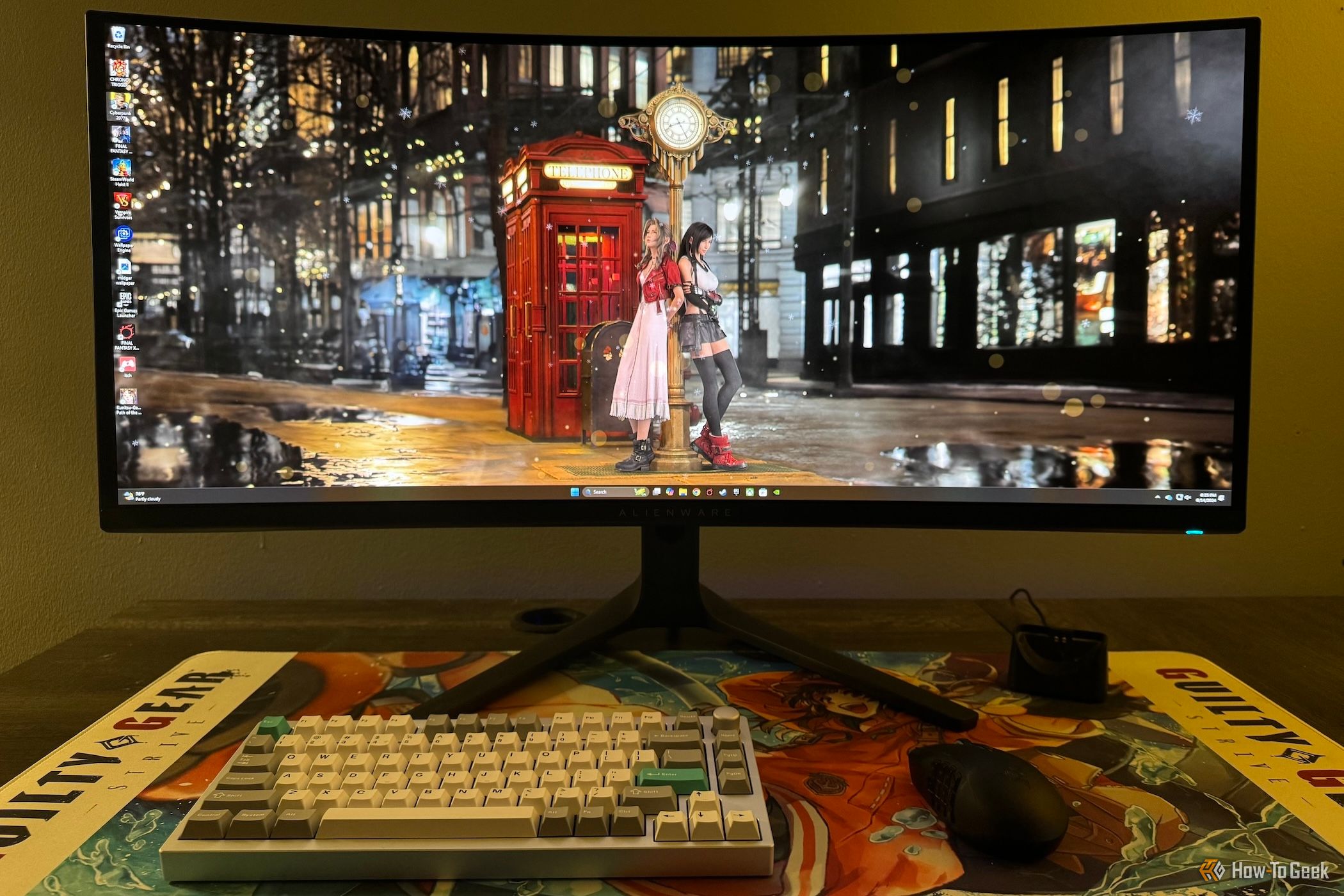
Tim Rattray / How-To Geek
For gaming purposes, it’s going to be hard for me to give up the curved ultrawide form-factor now that I’ve sipped from its font. It enhances nearly every game that supports the aspect ratio, and any outliers are at least interesting to experience in this cinematic presentation. If you’re looking for a way to spice up your PC gaming and have the money and power to spare, I recommend giving a curved ultrawide monitor a shot.
For some ideas, check out our best ultrawide monitors and our best curved monitors .
Also read:
- [Updated] Convenient Alias Adjustment in Google Meet Devices for 2024
- [Updated] In 2024, Missing Icon? Reclaim Your Facebook Watch Icon
- 2024'S Ultimate Selection of Live Streaming Cameras: In-Depth Analysis and Ratings | ZDNET
- Breakdown of Earnings How Much Does a Clicky Make for 2024
- Exclusive Gamer Discount: Slash Your Budget by $350 on Alienware Aurora R13 – Detailed Review & Offer Info
- Expert Advice: Best Alternatives to Dell and Lenovo for Your Office Setup Recommends a 2-In-1
- Full Guide on Mirroring Your Itel A05s to Your PC/Mac | Dr.fone
- In 2024, Mastering the Art of Action Shots with GoPro
- Install Drivers and Enhance Your Logitech K400+ Experience – Free Downloads Available
- Ultimate List: Save Big on Cyber Monday with These 98 Hot Deals in 2E22!
- Title: Enhanced Immersion in Gaming with the Transition to Curved Ultrawide Screen Technology
- Author: George
- Created at : 2024-12-20 16:15:34
- Updated at : 2024-12-27 16:02:52
- Link: https://hardware-tips.techidaily.com/enhanced-immersion-in-gaming-with-the-transition-to-curved-ultrawide-screen-technology/
- License: This work is licensed under CC BY-NC-SA 4.0.